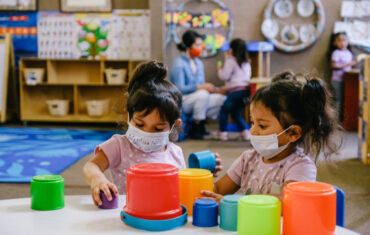Use of face mask is one of many strategies used to slow or prevent transmission of the flu virus in the event of a pandemic. Many different kinds of face masks and respirators are available. But the ones being considered for widespread use in an influenza pandemic are inexpensive, medical face masks and N95 respirators.
Comparison
Medical face masks fit loosely over the user’s nose and mouth. Health care providers and patients can wear them to maintain a sterile environment. They can prevent the spread of contaminants by the wearer. For example, they can help to limit the dispersal of sneezes and coughs.
Both medical and industrial settings use N95 to prevent the inhalation of harmful microscopic particles by the user. They fit snugly around the wearer’s mouth and nose. NIOSH certificate them to protect against 95 percent of an aerosolized test substance. Many organizations have tested both N95 respirators and other forms of face masks for their ability to protect against influenza viruses specifically.
Should not reuse
Medical face masks and respirators do not lend themselves to reuse. This because they work by trapping harmful particles inside the mesh of fibers. Wearers cannot clean out or disinfect this hazardous buildup. We can damage the fibers or other components of the device such as the straps or nose clip. Healthy people can use N95 mask for 8 hours continuously or intermittently. Or medical face masks for 4 hours at a time. Patients with chronic respiratory diseases are not recommended to wear them for a long time.
The new coronavirus is sensitive to ultraviolet rays. And ultraviolet disinfection does not affect the filtration efficiency of respirators. However, the inactivation effect of viruses in mask fibers, which human can not observe directly. Therefore, healthcare workers do not recommend to reuse them. The new coronavirus is sensitive to heat. It can effectively inactivate the new coronavirus by heating for 30 minutes at 56 degrees Celsius. Therefore, the single dry heat sterilization can effectively inactivate the virus without affecting the protective function of face masks. However, it is uncertain whether several times of disinfection affects the protective effect of face masks.
How about cotton masks?
The better choice for some people is cotton/cloth masks. Because there is no such filter structure, cotton face masks have a weak function of filtering virus. Usually cotton masks have more than 12 layers of yarn. It can be disinfected repeatedly if not obviously contaminate, soil or damage. People can reuse them in a short period of time. After use you can fold the inner layer of face mask in half, hang it separately. Or you can place it in a separate packaging bag.
Summary
Many medical mask manufacturers want to develop more effective materials and devices to protect against flu transmission. Therefore, researchers need to determine more precisely how flu viruses spread from person to person. Different types of face masks offer different levels of protection against various forms of harmful agents. In addition, manufacturers should develop new methods to decontaminate masks and respirators without damaging them.






